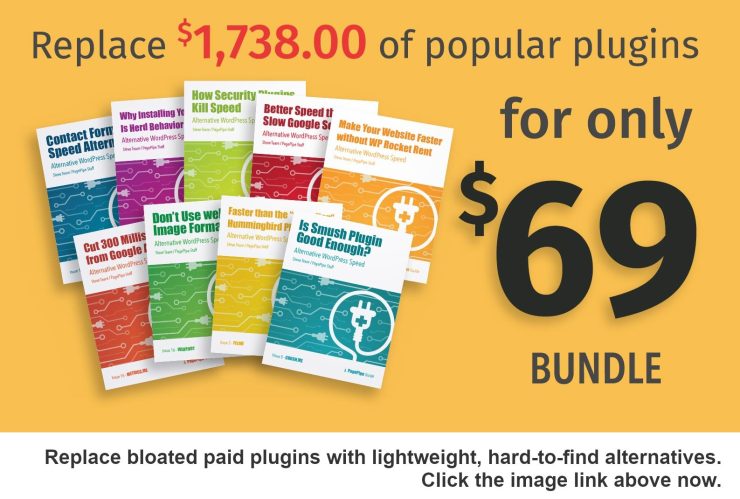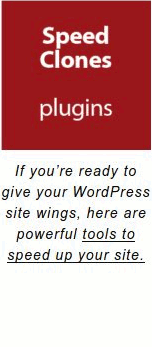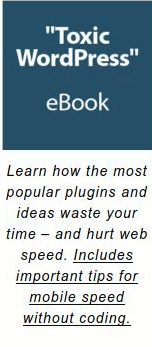With all the noise about the benefits of AI, we thought we’d give ChatGPT AI a whirl. What would it recommend? Anything new or brilliant about improving webpage speed?
The results are embarrassing. We’d classify them as:
Artificial Hallucination
Here’s the prompt we gave the ChatBot:
Please write a 1500-word blog post about WordPress Twenty Twenty-three default theme with particular emphasis on site optimization for page load time. this is also called performance optimization. Give the blog post an 8-word headline that is a question.
What follow is the dismal results with our rebuttal and links about our real-world experience.
Title: Is Your Website Fast Enough? Optimize WordPress Twenty Twenty-Three Theme for Lightning Speed
Introduction
In a world where internet users demand instant access to information, the speed of your website has never been more critical. The WordPress Twenty Twenty-Three default theme offers a modern, visually appealing design, but it’s essential to optimize it for lightning-fast page load times. This blog post will provide a comprehensive guide to performance optimization, ensuring your site is both stunning and blazingly fast.
COMMENTARY AND SNIDE REMARKS FROM PAGEPIPE
Twenty Twenty-three theme is fast out of the box. It wisely uses a mobile system font stack. The only thing that needs to be deactivated for speed is “Emoji.” It is not essential to optimize it.
REFERENCE: https://pagepipe.com/zero-latency-fonts-for-mobile-speed-system-ui-font/
REFERENCE: https://pagepipe.com/how-to-eliminate-deadweight-emojis-in-wordpress/
Importance of Page Load Time
Page load time is the time it takes for a webpage to load completely. It is a critical factor affecting user experience, search engine rankings, and conversion rates. Slow-loading websites lead to higher bounce rates, lower user engagement, and a reduced likelihood of visitors returning. In contrast, a fast-loading site offers a seamless user experience, encourages users to stay longer, and can lead to higher conversion rates.
MORE SNIDE REMARKS
Page load time is important. It affects the metrics the AI describes, but … it doesn’t directly affect search engine ranking. There is no data supporting this myth perpetuated by Google.
REFERENCE: https://pagepipe.com/googles-hypocritical-policies-affecting-mobile-speed/
WordPress Twenty Twenty-Three Theme Overview
The Twenty Twenty-Three default theme is the latest in the line of WordPress default themes, focusing on a minimalist design and incorporating a stylish, modern look. Its versatility makes it suitable for various applications, from personal blogs to professional websites.
However, while the theme provides an excellent foundation, there are still steps you can take to optimize its performance and ensure your website loads quickly for all users.
COMMENT AGAIN: Seriously, this theme doesn’t need tweaking for performance. ChatGPT is wrong.
Choose a Fast, Reliable Web Host
Your web host plays a significant role in your website’s performance. Opt for a hosting provider that offers solid infrastructure, fast servers, and excellent uptime. Look for hosts that provide specialized WordPress hosting plans, as they typically optimize their servers for WordPress websites.
NOTE: We agree hosting is important. But that has nothing to do with the theme or WordPress. We have recommendations in this free download:

REFERENCE: https://pagepipe-ebooks.com/wp-content/uploads/2021/02/hosting-master-v3-opt.pdf
Leverage Caching to Reduce Load Times
Caching is a technique that stores copies of your website’s pages and serves them to users instead of generating the pages from scratch each time a user visits. This can significantly improve load times. There are several caching plugins available for WordPress, such as WP Rocket, W3 Total Cache, and WP Super Cache. These plugins can help optimize your site’s performance by implementing browser, page, and object caching.
SNIDE REMARK: These caching plugins are unnecessary if you have LiteSpeed Cache servers (like on GreenGeeks). All you need is a Far Futures Expiry plugin.
REFERENCE: https://wordpress.org/plugins/far-future-expiry-header/
REFERENCE: https://pagepipe.com/the-downside-of-litespeed-cache-plugin/
Optimize Images for Faster Loading
Large, high-resolution images can significantly slow down your site’s load time. To optimize your images, compress and resize them before uploading them to your site. You can use online tools like TinyPNG or plugins like Imagify and Smush to compress your images without compromising quality.
Additionally, use the appropriate image format for your website. For example, use JPEG for photographs and PNG for images with transparency or text.
REMARKS: Hurray! They didn’t mention the bogus format WebP usually and erroneously recommended for speed. And we don’t recommend those image optimization plugins. In truth, you rarely need an image optimization plugin because WordPress optimizes images automatically for you when you upload them to the media library. Try it. But don’t use PNG format for large photographs.
REFERENCE: https://pagepipe.com/how-webp-kills-your-wordpress-media-library/
REFERENCE: https://pagepipe.com/efficient-plugins-strategies-for-optimizing-images/
Use a Content Delivery Network (CDN)
A CDN is a network of servers distributed across multiple locations worldwide that cache and serve your website’s static content (images, CSS, JavaScript) to users from the server closest to them. This reduces the latency and speeds up your website’s load time. Popular CDNs include Cloudflare, Amazon CloudFront, and KeyCDN.
REMARK: Never use Cloudflare free version. CDN is a band-aid for a poorly built website.
REFERENCE: https://pagepipe.com/cloudflare-doesnt-guarantee-consistent-load-times/
Minify and Combine CSS and JavaScript Files
Minification is the process of removing unnecessary characters (such as spaces, comments, and line breaks) from CSS and JavaScript files, resulting in smaller file sizes and faster load times. Additionally, combining multiple files into one reduces the number of HTTP requests your site needs to make, further improving load times.
There are several plugins available for WordPress that can help you minify and combine your CSS and JavaScript files, such as Autoptimize, WP Rocket, and Fast Velocity Minify.
NOTE: OK. Minification will improve your site score on a test. But probably won’t improve speed one iota. Usually, it will break your site. Not worth it.
REFERENCE: https://pagepipe.com/concatenation-is-the-site-killer-not-minification/
Enable Gzip Compression
Gzip compression is a server-side technology that compresses your website’s files before sending them to the user’s browser. This reduces the amount of data transferred between the server and the user, resulting in faster load times. Most web hosts enable Gzip compression by default, but you can also use a plugin like WP Rocket or W3 Total Cache to enable Gzip compression if it’s not already active on your server.
NOTE: Gzip is always “on” for good hosting providers. You don’t need to worry about this.
REFERENCE: https://pagepipe.com/update-on-gzip-compression/
Optimize Database Performance
Over time, your WordPress database may accumulate unnecessary data, such as post revisions, drafts, and spam comments. This excess data can slow down your website’s performance. To optimize your database, use a plugin like WP-Optimize or Advanced Database Cleaner to clean up and remove the unnecessary data, resulting in a leaner, faster database.
NOTE: This is waste of time. Good housekeeping. But never makes a difference in speed. If you use a database cleaner plugin, disable it when you aren’t using it for maintenance.
Implement Lazy Loading for Images and Videos
Lazy loading is a technique that defers the loading of offscreen images and videos until they are needed, which can improve page load times. This is especially useful for sites with many images and videos, such as galleries or portfolios. There are several plugins available for implementing lazy loading in WordPress, including a3 Lazy Load, Lazy Load by WP Rocket, and BJ Lazy Load.
NOTE: Lazy loading images is built-in to WordPress now. But if you are nervous, use LiteSpeed cache to handle this. For video, use the plugin recommendations below:
REFERENCE: https://pagepipe.com/lazy-load-youtube-video-for-mobile-speed/
Limit the Number of Plugins and Widgets
While plugins and widgets can add functionality and customization options to your site, having too many can slow down your site’s performance. Regularly review the plugins and widgets you have installed and deactivate or delete any that are not necessary for your site’s functionality.
NOTE: Big fat “wrong” here.
REFERENCE: https://pagepipe.com/wp-content/uploads/2019/09/disclaimer-readme.pdf
Keep WordPress, Theme, and Plugins Updated
Updates to WordPress, your theme, and plugins often include performance improvements and bug fixes. Make sure to keep your site up-to-date to take advantage of these improvements and maintain your site’s performance.
NOTE: Updating plugins and theme is best practice but … we’ve never seen it speed up a site. We’ve seen it slow down a site or two. Plugins get fatter as they are fixed and changed over time.
Monitor Your Site’s Performance
It’s essential to monitor your site’s performance regularly and identify any areas that may require optimization. Use tools like Google PageSpeed Insights, GTmetrix, or Pingdom to test your site’s load time and receive recommendations for improvements.
REMARK: They left out one of our favorites: WebPageTest.org
Conclusion
As you can see by now, ChatGPT AI merely regurgitates what is on most speed blogs. Myths and falsehood. Things blog owners never test for themselves. The blind leading the blind.
Godspeed-
![]()
Steve Teare
performance engineer
February 2025
PagePipe Site Tuning Services for Speed
Instead of band-aid approaches, we drill down to the root cause of your slow site. This is origin optimization. Also known as site tuning. To do this, we analyze site components:
- Hosting
- Theme
- Plugins
- Scripts and third-party services.
- Images and media library.
- We minimize globally loading plugin effects.
Find out more details about Site Tuning – Get Speed!






